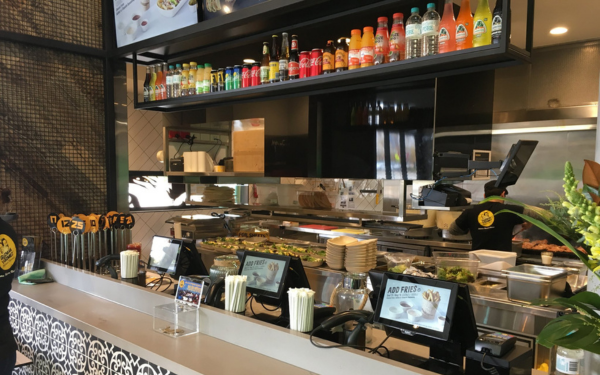As far as appearances go, the typical POS terminal is pretty low key. At AURES, we certainly design our hardware to be tasteful and to look at home in any professional environment. But we also purposefully make our POS terminals compact and with spatial economy to the fore.
This is something clients in the hospitality industry regularly praise us for. Sleek, discreet hardware that takes up minimal space but still looks good is ideal for cafes, bars, small restaurants and more.
But looking at one of these slimline, unprepossessing units – more touchscreen than anything else, with CPU and other gadgetry cunningly tucked away in the stand and/or base – you wouldn’t necessarily think you were looking at the single most important hub for managing your entire business.
And yet that is exactly what a modern POS terminal is. Point of sale may still carry the name coined when tills and cash registers were there to process transactions and little more. But today’s minimalist checkout devices offer functionality way beyond the sale.
In fact, thanks to the marvels of networking protocols and cloud software, POS terminals aren’t even limited to running operations they are specifically built to run. Like smartphones and the galaxy of mobile apps, POS hardware has evolved into a general purpose computing interface. In the context of your business, this means that all the essential processes that keep you ticking over – sales, inventory, CRM, finance – can be managed and connected through your POS.
This is called POS integration. The principle is simple. Now that most business processes are digitised, it makes sense to link everything together to create continuous workflows. It’s more efficient, it means data can be shared and used right across the business, it allows multiple tasks to be carried out from a single location, and it leads to a more seamless, joined-up experience for customers. As every customer-facing business has a POS system anyway, it’s a natural choice to serve as the ‘hub’ fo all this to happen.
POS integration for restaurants
So what does POS integration look like for hospitality businesses specifically, and what are the benefits?
Different sectors of hospitality have their own unique operational characteristics and requirements. But what is consistent across them all is the role POS can play in joining all the dots to the benefit of the business.
For example, in restaurants, POS terminals are no longer used simply to ring through the bill and log payment at the end of a meal. POS can play a role in the entire dining experience, from making a table reservation and placing an order to streamlining meal prep and service.
What we see in the restaurant trade in particular is the way that new forms of POS have taken up important roles. In the QSR sector, for example, self-service kiosks are now widely used as ordering hubs, cutting queues and boosting average order value by giving customers time to place orders at their own pace. In the dine-in sector, mobile POS tablets are increasingly used by waiting staff to take orders at the table.
In both settings, once orders are placed digitally via kiosk and tablet, they are routed straight to kitchen management systems (KMS), which not only display all ‘live’ orders for kitchen staff on digital screens, but automatically sort and prioritise what needs preparing. The direct link from order to kitchen improves accuracy, while KMS helps to improve speed and efficiency of service.
Beyond this, ordering can also be linked directly to inventory management software, so if a meal has to be taken off the menu, customers can be informed right away. This also helps with timely replenishment.
Integrating guest services in hotels
In the hotel industry, POS is often used in several different places for several different purposes at once. Check-in at reception, bars, restaurants, room service, gym and spa facilities, on-site retail concessions, travel agencies and trip bookings – integrating all of these into a single, unified operational hub makes a tangled web of operations into much easier to manage.
For guests, integrated POS across all services can mean having a single account they settle up at the end, with no extra workload for the hotel and guaranteed accuracy. It can also give them the flexibility to make table reservations or book spa treatments or trips from self-service consoles around the premises. Extending integration to booking systems can mean guest details are already logged on arrival, and streamlined check-in can take place with a simple ID confirmation (perhaps via a kiosk).
Many hotels nowadays also further integrate guest services with things like housekeeping and maintenance, allowing guests to report issues or make requests that get picked up and responded to with minimum delay.
Overall, POS integration is an effective and important way to break down operational silos in hospitality. By joining up processes and allowing data to flow freely throughout their organisation, hospitality businesses can drive efficiencies and improve the customer experience, all through unlocking the full potential of technology that is already an integral part of how they run.
To find out more about POS integration in hospitality, join us at the Hospitality Tech Expo at ExCel London on October 15th and 16th, where this will be just one of a fascinating programme of keynote addresses over the course of the two days.




